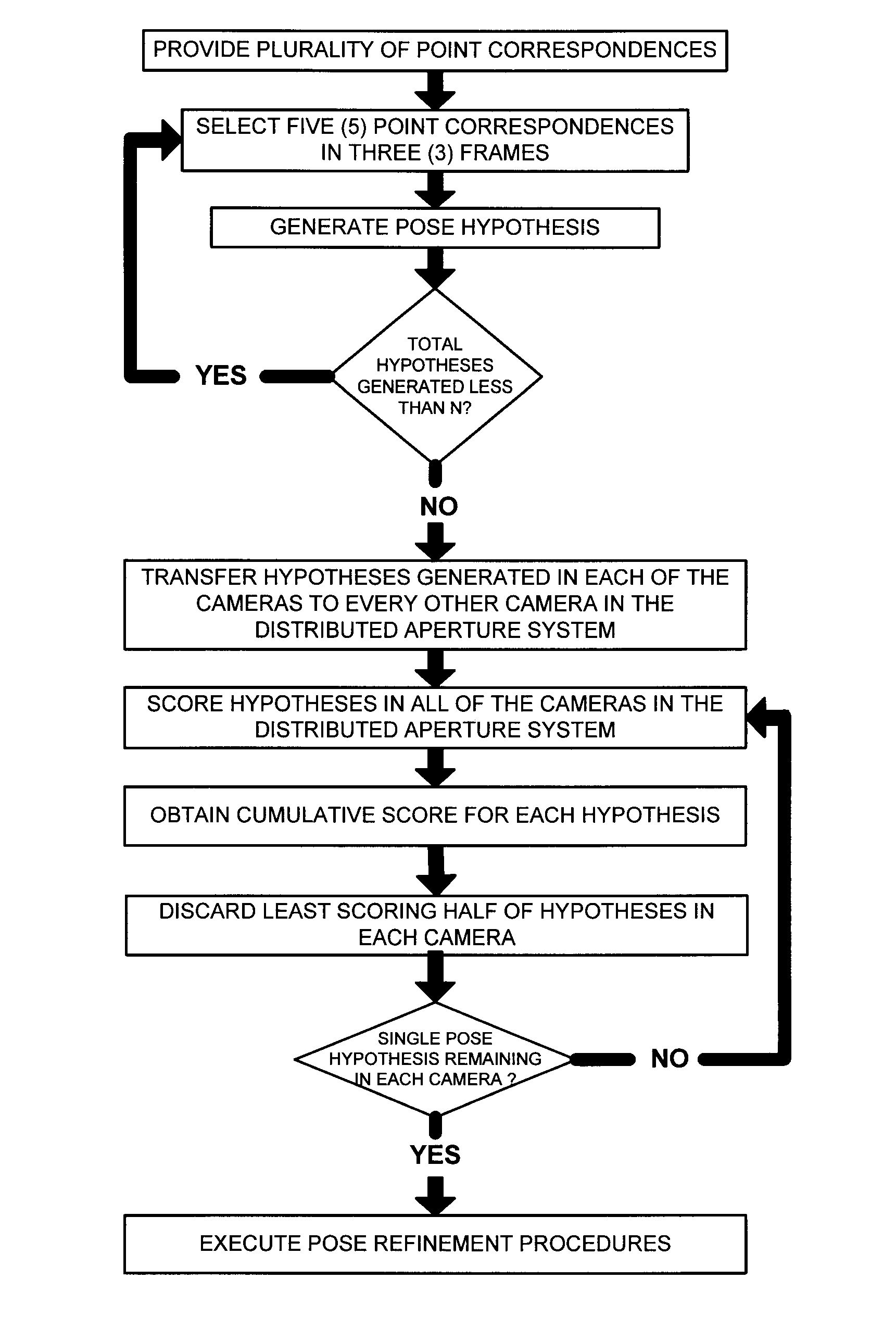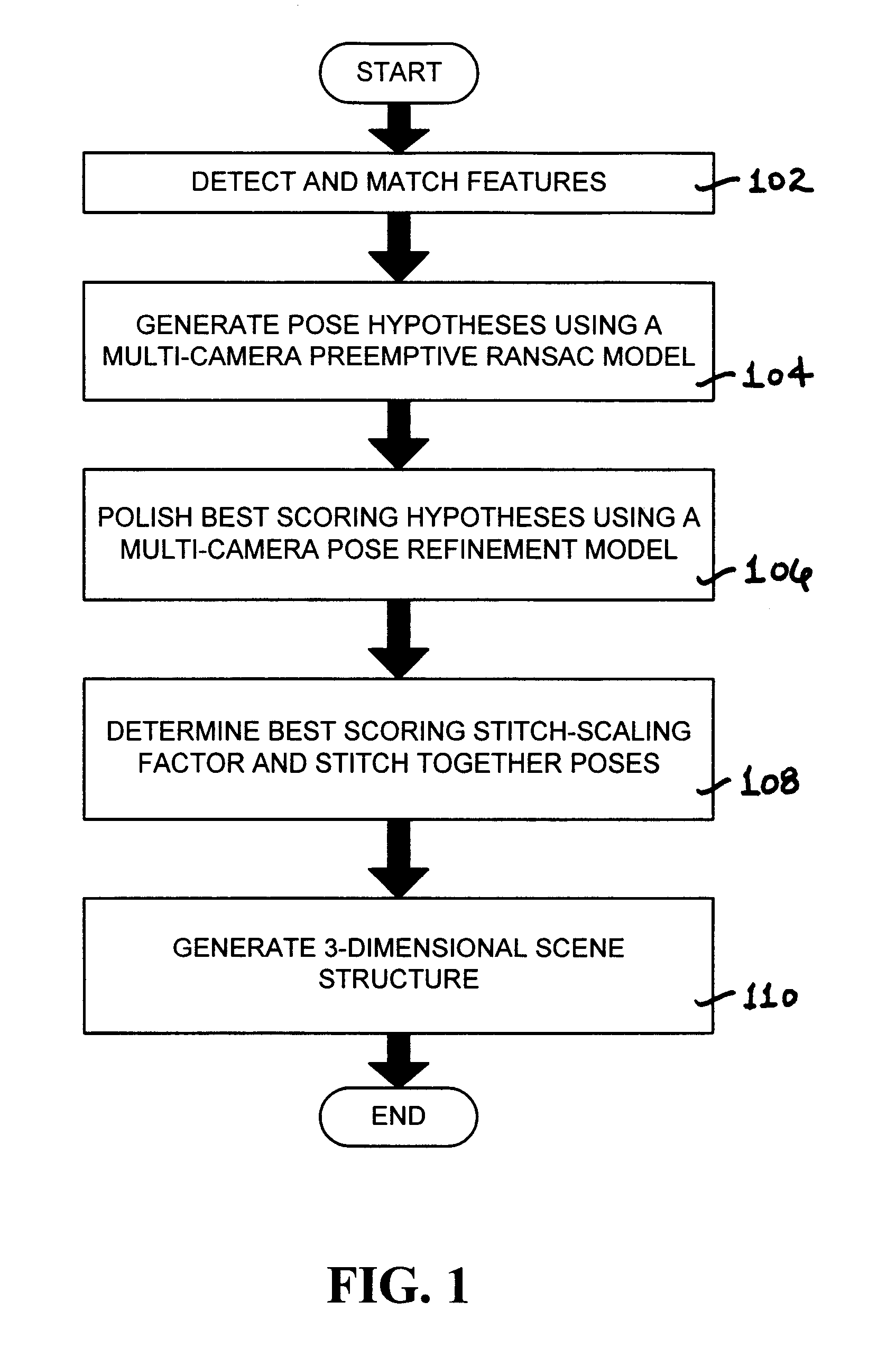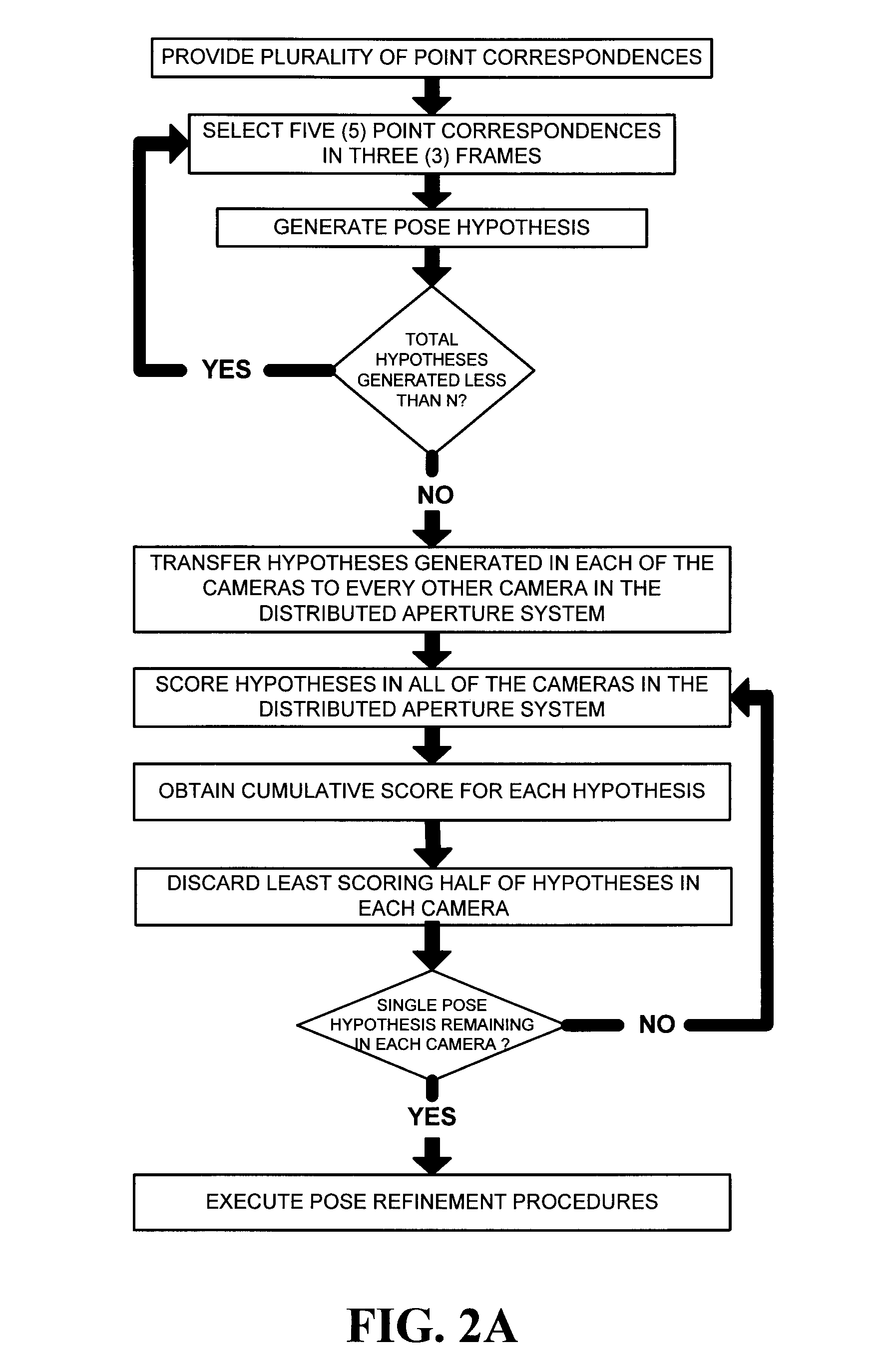System and method for multi-camera visual odometry
a multi-camera, visual odometry technology, applied in the field of video image processing, can solve the problems of inability to accurately determine the location of objects
- Summary
- Abstract
- Description
- Claims
- Application Information
AI Technical Summary
Benefits of technology
Problems solved by technology
Method used
Image
Examples
Embodiment Construction
[0023]The present invention is directed to improved visual odometry methods for a distributed aperture system. For purposes of clarity, and not by way of limitation, illustrative views of the present invention are described with references made to the above-identified figures. Various modifications obvious to one skilled in the art are deemed to be within the spirit and scope of the present invention.
[0024]In a distributed aperture system employing multiple cameras, visual odometry is typically applied in each of the cameras individually for purposes of estimating the pose of each of the cameras. However, due to the relative poses of each of the cameras being of a fixed and known configuration, single-camera results are constrained. In order to take advantage of these constraints, it is necessary to provide a method for computing the poses of all the cameras in a distributed aperture system given the pose of any one camera. The present invention takes advantage of these constraints ...
PUM
 Login to View More
Login to View More Abstract
Description
Claims
Application Information
 Login to View More
Login to View More - R&D
- Intellectual Property
- Life Sciences
- Materials
- Tech Scout
- Unparalleled Data Quality
- Higher Quality Content
- 60% Fewer Hallucinations
Browse by: Latest US Patents, China's latest patents, Technical Efficacy Thesaurus, Application Domain, Technology Topic, Popular Technical Reports.
© 2025 PatSnap. All rights reserved.Legal|Privacy policy|Modern Slavery Act Transparency Statement|Sitemap|About US| Contact US: help@patsnap.com



